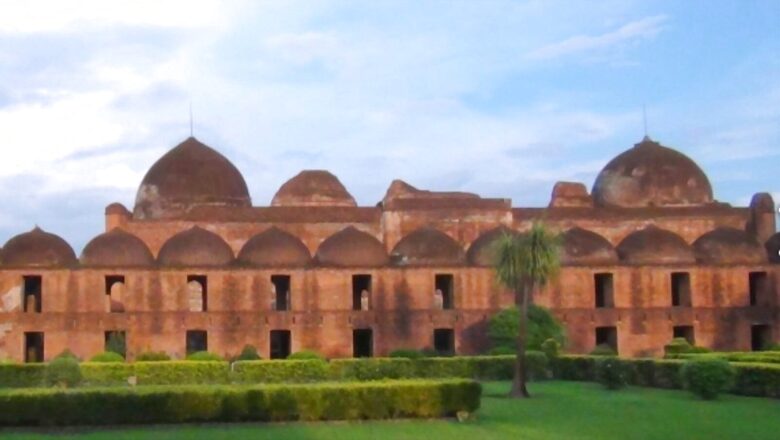
views
It has been a year since unprecedented violence took place in West Bengal after the Assembly election results were announced. Why has Bengal been suffering violence (both West Bengal and Bangladesh)? What was the original demographic composition of Bengal and how it has changed; and how has this affected the socio-political milieu in this region? This multi-part series attempts to trace the origin of socio-political trends in the larger Bengal region (state of West Bengal and Bangladesh) over the past several decades. These trends are related to the evolution of Bengal over the last 4000 years. It’s a long journey and unfortunately most part of it has been forgotten.
The earliest defining moments for Bengal in the 20th century were its partition in 1905 and its annulment in 1911. The British had decided to partition Bengal primarily for two reasons — first, to curb the growing nationalism and second to promote Muslim separatism. The annulment of this partition wasn’t taken kindly by the Muslims in Bengal. In fact, Bengal witnessed a spate of communal riots in the first half of the 20th century which were an outcome of a clash between the Hindu nationalism and the Muslim fundamentalism.
While in next part of this series, we will discuss these communal riots, in the current part, we talk about the partition of Bengal and its annulment in context of the growth of Muslim separatism.
PARTITION OF BENGAL AND ITS ANNULMENT
Bengal was partitioned on October 16, 1905 by the British. Different reactions to this partition from Hindus and Muslims clearly indicated the communal divide in this region. While Hindus opposed it tooth and nail, the Muslims largely supported this partition. These two different attitudes were also a reflection of the battle between Nationalism and Separatism in Bengal. The partition and its annulment also made the Muslim separatist movement in Bengal move closer to the Aligarh movement started by Sir Syed Ahmad Khan which propagated the two-nation theory.
Nitish Sengupta explains this communal divide (Bengal: The Unmaking of a Nation; pp16-17), “…A great divide had already been created when the partition of Bengal, a sinister move to curb the influence of the anti-British Hindu elite, took place. No doubt the anti-partition agitation was the first of the great people’s movement against colonial rule. But paradoxically, except for a handful like Barrister Abdullah Rasul, the majority of the Muslims in East Bengal supported partition and viewed the great anti-partition agitation as an attempt to deny them an opportunity to have a Muslim majority province, an aspect that has been ignored by Indian national historians. ”
It is a well-documented fact that prior to the partition, Lord Curzon, the British viceroy in India had toured East Bengal and appealed to the Muslim separatists. He had addressed meetings at Chittagong, Dhaka and Mymensingh. Speaking at Dhaka on February 18, 1904, he declared (Curzon’s speeches, Vol. 3, pp303-304), “Partition would make Dhaka the centre and possibly the capital of a new self-sufficing administration which must give to the people of these districts by reason of their numerical strength and their superior culture, the preponderating voice in the province so created, which would invest the Mohammedans in eastern Bengal with a unity which they have since the days of the old Mussalman Viceroys and Kings.”
Bhaswati Mukherjee has analysed the implications of the partition of Bengal (Bengal and its Partition, pp85), “Curzon’s agenda was clear. He wished to encourage Bengali Muslim leaders to support the partition. The partition encouraged the rise of communalism in the Muslim community and the utilization of mob violence to pressure the British, the Bengali Bhadralok and the influential Marwari and Jain community into concessions.”
Mukherjee further explains how under the leadership of Nawab Salimulla of Dhaka, who founded the Muslim League in 1906, the Bengali Muslims extracted many concessions from the British till 1911 when the partition of Bengal was annulled. “Muslims were preferred over better qualified Hindus for appointment to a large number of new posts in the Provincial and Subordinate services, that were sanctioned in July 1906, allotting special funds and personnel for Muslim education, preparing plans for a new university and high court for Dhaka and installing the Nawab as their chief non-official adviser and their main agent for the distribution of patronage.” (Bengal and its Partition; pp87)
It is quite evident that Muslim separatism and communalism flourished in Bengal as a result of its partition. Hence its annulment was opposed by Muslim leaders vehemently. The annulment also resulted in emergence of a new separatist leader Fazlul Huq, who later played a key role in the Bengal’s politics. Huq had joined government service as a deputy magistrate. Deeply upset over the annulment of Bengal’s partition, Nawab Salimulla convinced him to resign and join Muslim politics. According to Nitish Sen Gupta (Bengal: The Unmaking of a Nation; pp19), “In April 1914, in the Bengal legislative assembly, Huq expressed his bitterness over the annulment of partition and warned that for the Muslims, there may be parting of ways.”
Huq and his group pushed the Congress Party to accept separate electorate for Muslims in Lucknow pact signed between the Muslim League and the Congress in 1916. This was another victory for the Muslim communalists, even as Congress had buckled down under their pressure. This further paved the way for the infamous Communal award in 1932. Both these pacts were an indication that Congress had succumbed to the policy of appeasement of Muslims paving the way for the partition of India.
Meanwhile, the growing influence of Fazlul Huq in Muslim politics of Bengal was challenged by another rival Nawab Khan Bahadur Saiyid Nawab Ali Chaudhari. He was the Eastern Bengal representative in the Imperial Legislative Council. He resigned from Muslim League in wake of the Lucknow Pact, demanding even greater number of seats for Muslims in Bengal’s provincial legislative assembly.
According to Mukherjee (pp 92), “What was troubling in Nawab Chaudhari’s narrative was the implicit implication of two alternatives facing the Muslim community in Bengal to come to power: the vote or resort to mass violence as the route to political power. These two options were to remain for Bengal Muslim politicians as the main alternative instruments of power through the next three troubled decades, leading up to the final partition.”
The writer, an author and columnist, has written several books. One of his latest books is ‘The Forgotten History of India’. The views expressed in this article are those of the writer and do not represent the stand of this publication.
Read all the Latest Opinions here

















Comments
0 comment